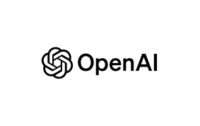The demand for alternative cloud solutions is reaching unprecedented levels, as evidenced by recent developments.
CoreWeave, initially a cryptocurrency mining venture, has just secured a staggering $1.1 billion in new funding from investors such as Coatue, Fidelity, and Altimeter Capital. This funding round, reportedly valuing the startup at $19 billion post-money, brings CoreWeave’s total raised capital to an impressive $5 billion in debt and equity, a remarkable achievement for a company less than a decade old.
Expanding Landscape of Alternative Cloud Providers
CoreWeave is not alone in this surge of activity. Lambda Labs, specializing in cloud-hosted GPU instances, recently secured a “special purpose financing vehicle” of up to $500 million, following a $320 million Series C round. Additionally, nonprofit Voltage Park, backed by crypto billionaire Jed McCaleb, announced a $500 million investment in GPU-backed data centers last October. Similarly, Together AI, a cloud GPU host focusing on generative AI research, closed a $106 million funding round led by Salesforce in March.
The Role of Generative Artificial Intelligence
The enthusiasm and investment pouring into the alternative cloud space can be attributed to one key factor: generative artificial intelligence (AI).
As the demand for generative AI continues to soar, there is a corresponding need for hardware capable of running and training AI models at scale. Graphics Processing Units (GPUs) emerge as the preferred choice due to their parallel processing capabilities, making them ideal for handling the complex computations involved in generative models.
Cost and Performance Considerations
While incumbent cloud computing giants like Amazon Web Services (AWS), Google Cloud, and Microsoft Azure offer GPU instances optimized for generative AI workloads, alternative clouds can offer cost-effective solutions with improved availability.
For instance, renting an Nvidia A100 40GB GPU on CoreWeave costs significantly less compared to Azure or Google Cloud, making alternative clouds an attractive option for certain projects and models.
The Rise of GPU-Centric Cloud Providers
Specialty “GPU as a service” cloud providers like CoreWeave are gaining traction, offering an alternative to the hyperscalers by providing access to Nvidia GPUs through different routes to market.
Even major tech firms are turning to alternative cloud providers to address compute capacity challenges. For example, Microsoft signed a multi-billion-dollar deal with CoreWeave to support OpenAI’s generative AI models.
Challenges and Sustainability
While the growth of alternative cloud providers appears promising, sustainability hinges on their ability to scale GPU infrastructure and offer competitive pricing.
Incumbents like Google, Microsoft, and AWS are investing in custom hardware solutions, potentially challenging the pricing advantage of alternative clouds.
Additionally, not all AI workloads require GPUs, posing a challenge to GPU-centric cloud providers.
Future Outlook
Despite these challenges, the future looks bright for alternative cloud providers in the short term. Customers seeking premium AI services and multi-cloud solutions are likely to fuel continued growth in this space.
As long as alternative cloud providers maintain credible leadership, solid financial backing, and efficient GPU infrastructure, they stand to capture a significant share of the market, offering customers choice and flexibility in their cloud computing needs.


















